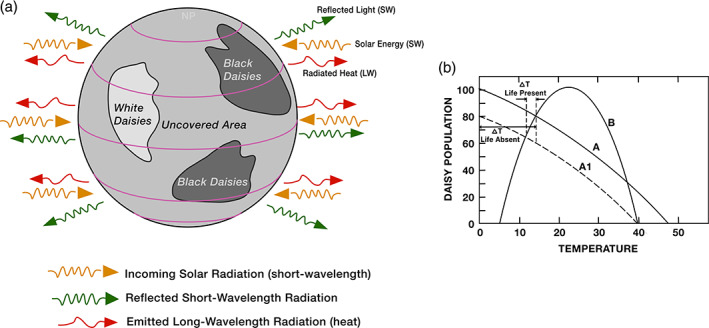FIGURE 2.

(a) Schematic model of Daisyworld, whose surface is covered by black and white daisies and empty area. The temperature of Daisyworld is related to how much energy is received and how much is reflected; the difference is the amount of solar energy absorbed. The amount of energy reflected back to space depends on the planet's albedo (the fraction of light energy that is reflected). The albedo in turn depends on the coverage of white and black daisies. The heat radiated to space is a function of how much energy is absorbed. (b) Line A shows daisy cover against Daisyworld temperature, plotted here for white daisies. More of these daisies will reflect more radiation and so the mean temperature will be reduced. Line B shows the growth of these daisies at different temperatures. Line A1 illustrates less incoming solar radiation on the daisies, showing that the world will cool by 16 degrees unless the daisies respond. If the daisies respond by dying back, the difference dTl in world temperature is only 2 degrees. According to Lovelock (1986), “This simple responsive coupling between life and its environment is the basis of geophysiological regulation.”
